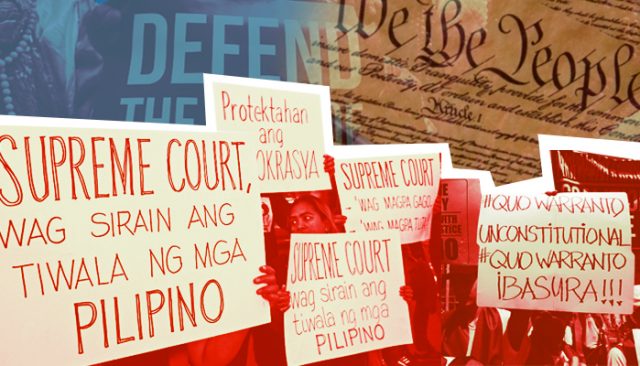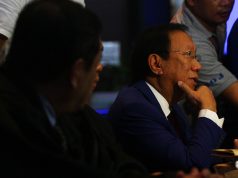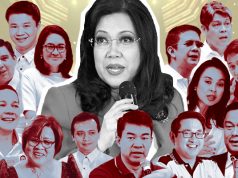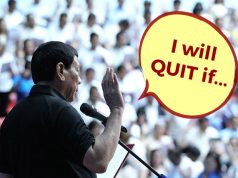In the days leading up to the Supreme Court’s decision on the quo warranto proceeding against now-former Chief Justice Maria Lourdes Sereno’s appointment, the word “constitutional crisis” was thrown around, and not just by those in the punditry with the license to practice law.
‘Crisis’: The prelude
The resistance from the Sereno camp came with an ominous warning: a constitutional crisis is coming.
Former solicitor general Florin Hilbay a few days before the high court’s decision advocated against the tribunal deciding on the matter immediately. According to the former state attorney, a delayed decision would help defuse the rising public tension.
“It will be tragic if the people see the [Supreme Court] as responsible for a crisis that affects the national interest,” motioned Hilbay in a statement prior to the decision.
Columnist Philip Lustre Jr. also warned of a constitution crisis. In a post, he called the attempt to remove Sereno through the quo warranto proceeding a “patently unconstitutional and illegal act.
Their reasons are as follows:
- With new precedent set, “quo warranto” and “impeachment” will be used as a political weapon,
- Attack on judicial independence, Supreme Court may be colored by politics,
- Disrupted SC operations because of frequency of controversies,
- Faith in judiciary being perpetually clouded by doubt.
Philstar.com has reported on the possible effects of the Sereno ouster, as claimed by various legal experts. Among these are:
- The president will be able to appoint more justices,
- An undermining on the security of tenure of the judiciary
- Precedent allowing quo warranto removals of top officials whether their offense be impeachable or not.
With an unfavorable decision out, administration critics from the typically-fragmented opposition decry what they say is a violation of the check-and-balance of powers.
#StandwithCJ W/ the petition to disqualify CJ granted, Duterte & his minions in the judiciary have not only successfully eroded the Constitutionally enshrined principles of checks-and-balances and separation of powers, but also give ultimate control of the judiciary to a madman.
— Sarah Elago (@sarahelago) May 11, 2018
Doom-saying or foresight?
With Sereno’s removal now a reality, her supporters’ greatest fear appears to have been made into light.
Some have sought comfort in memories of past governance.
Our democracy is dead. Our law is dead. Kung nabubuhay ka lang Sen. Miriam Defensor Santiago. Di magkakaganito ang Pilipinas!!! We are now in what we so-called Constitutional crisis. I wish you still here guiding, helping our nation. ? #SerenoOuster
— Ralph Stephen Brucal (@raphaelbrucal) May 11, 2018
Political scientists and writers in the West have also written extensively on the process of defining ‘constitutional crisis,’ in response to the myriad controversies in the Trump presidency.
Political science professors Julia Azari and Seth Masket in a 2017 article proposed four situations where a constitutional crisis arises:
- When the constitution does not say what to do,
- When the constitution’s meaning is in question,
- When the constitution’s directive is not politically feasible, and
- When government institutions have failed.
“Serious constitutional crises occur when our institutions are rendered ineffective,” Azari and Masket wrote.
They also explained they are usually “about politics more than process, and often has less to do with how institutions were designed than with how legitimate they are perceived to be.”
What jurisprudence says
Associate Justice Marvic Leonen in his lengthy opinion in the 2017 decision on the petition assailing the House of Representatives’ failure to convene on the suspension of the writ of habeas corpus in Mindanao tackles the issue in passing.
According to Leonen, a deadlock between the two chambers of congress should they vote separately on an issue, such as the suspension of the writ could lead to a constitutional crisis.
“The ponencia proposes a doctrine which will possibly result in a deadlock in the future. With the interpretation proposed by the ponencia, two of the four possibilities will result in a constitutional crisis,” writes Leonen in his dissent.










